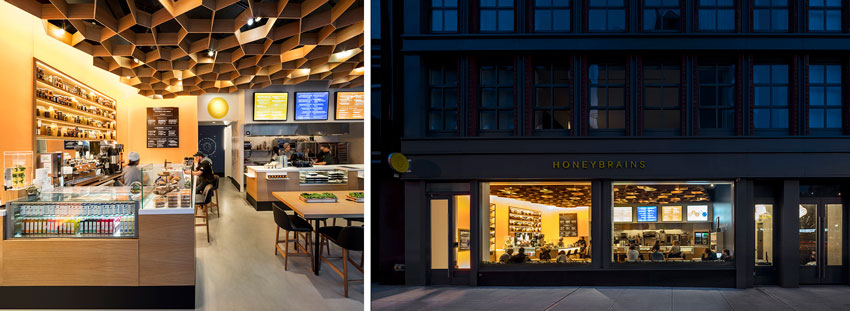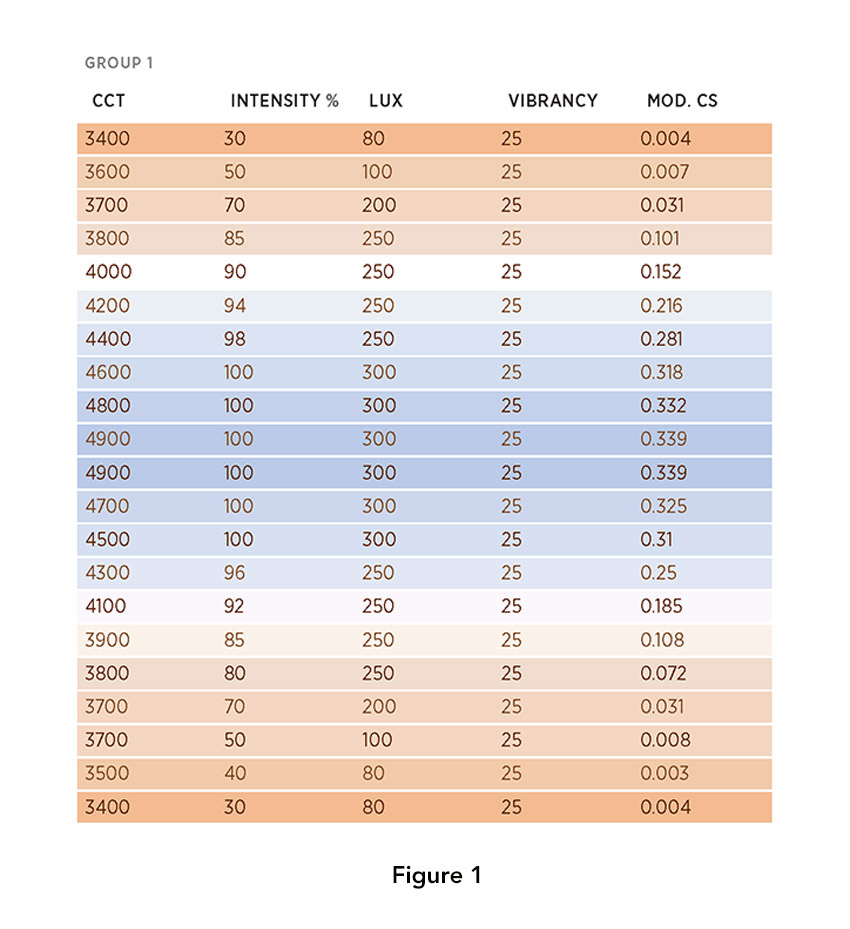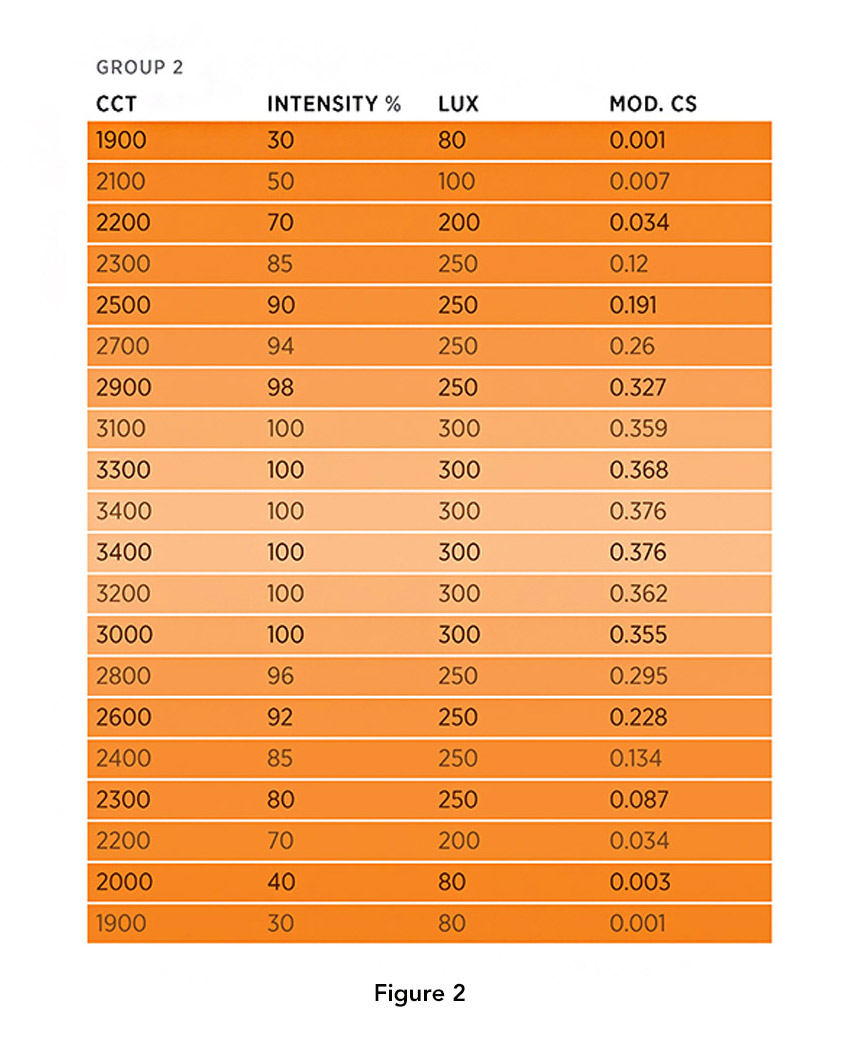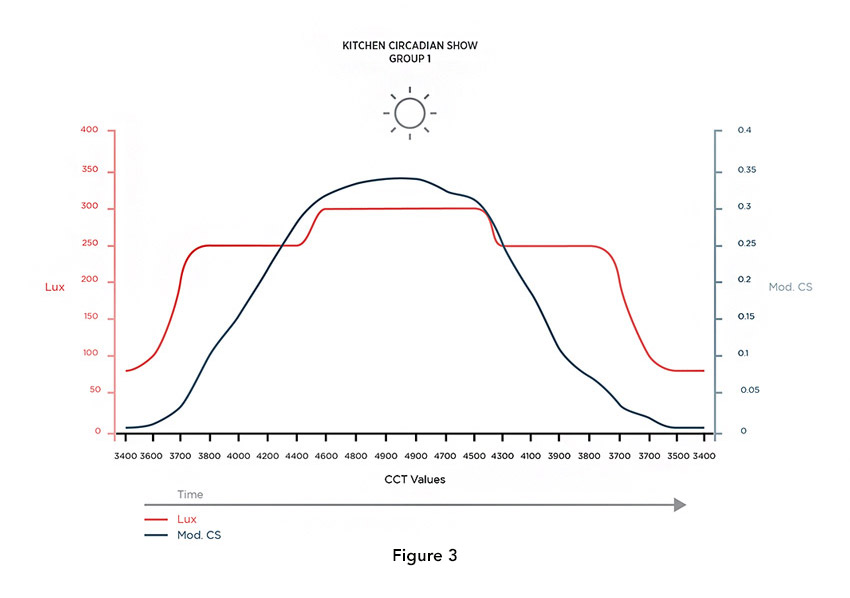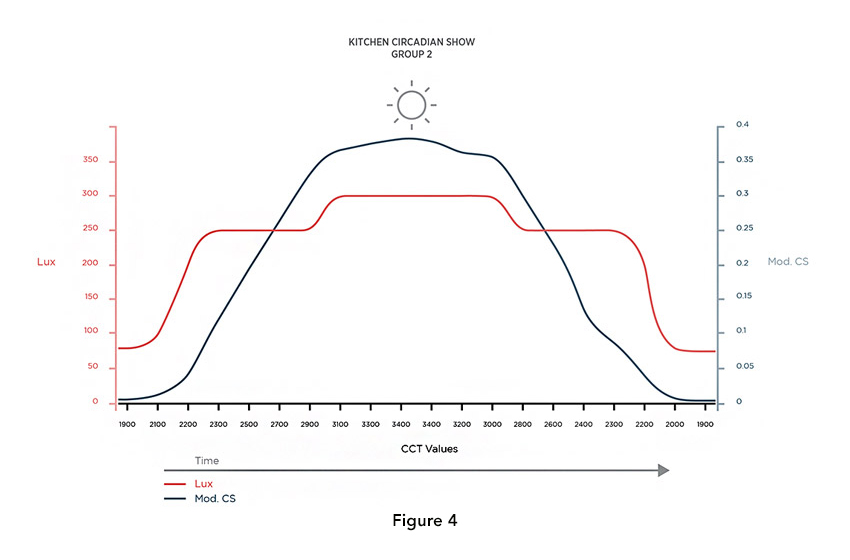Circadian Lighting in the Built Environment
Identifying Circadian Stimulus
Understanding the impacts and benefits of circadian reinforced light patterns raises the question of quantifying the degree to which different lighting types or levels actually trigger a human response. In that regard, the circadian stimulus (CS) of a light source has been developed. The CS is a calculated index that considers both the wavelengths and intensity of a given light source and assigns a weighting function representing the human circadian sensitivity to light. The higher the concentration of light in the blue wavelength range, as well as the higher the intensity of light (light delivered to the vertical plane at eye level), the higher the CS value. In order to enable the application and quantification of this metric, researchers have developed the circadian stimulus calculator for determining the CS value of a light source based on spectral power distribution and intensity. Inputs to the model are the spectral power distribution (SPD) of the light source and target illuminance (lux) level of the space.
The benefit of controlling interior lighting based on the CS is the full reinforcement of the body’s internal clock and circadian rhythms, thus maximizing productivity, mood, hormones, metabolism, and optimizing health as evidenced in the numerous studies looked at. In settings where sleep occurs (residential, hotels, health-care facilities), an advanced lighting system eliminates blue light exposure at night (which negatively impacts melatonin production) and helps regulate sleep cycles. In commercial buildings, the intent is to improve the well-being of people and employees in the building.
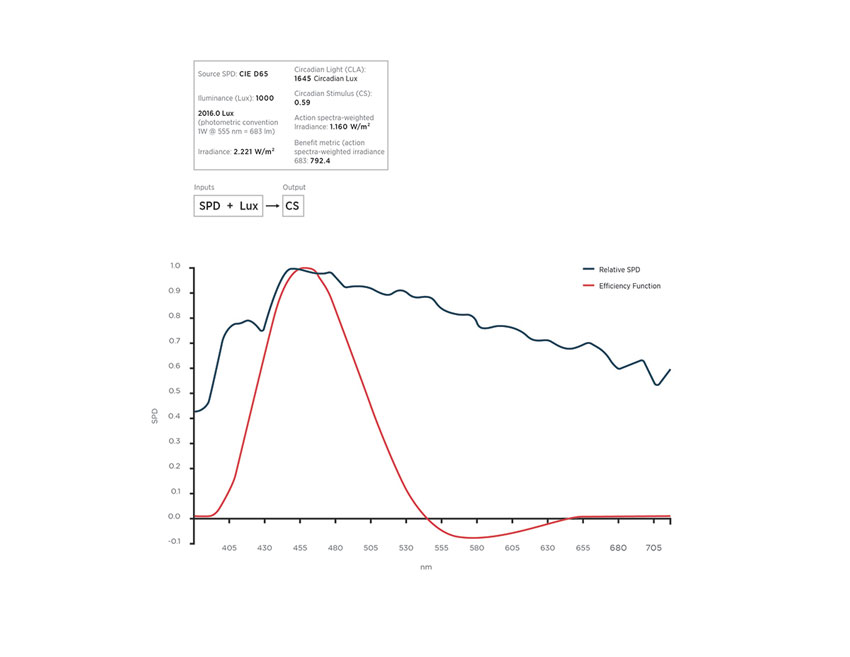
Image courtesy of Ketra
The circadian stimulus (CS) values of lighting can be measured and used to establish preferred circadian shows in buildings to provide very controlled light quality throughout the day.
Dynamic Lighting Systems To Produce Natural Light Patterns
Having identified the issues and effects related to the problem of disrupted circadian rhythms, we can now turn our attention to the solution found in a dynamic lighting system. Simply put, these systems change the light quality and levels over the course of a day in a manner that mimics natural daylight shifts and reinforces human circadian rhythms as a result. They do that based on simple but sophisticated light controllers tied to light fixtures that can be adjusted for light brightness and color. To be effective, they need to be located wherever there are people in a building or facility. This new, circadian-based method of “smart” controlled lighting has been shown to be the best way to meet WELL lighting standards, promote overall wellness and improve mood, productivity, and sleep. As such, it effectively replaces older lighting systems that use low-tech, static (on or off) switching that may not be optimized for the best quality of light.
The first step for a successful dynamic lighting system is to do an analysis of the interior spaces and the patterns of building usage by people. Then specific control patterns, called “circadian shows,” can be prepared, implemented, and modified as needed to suit building conditions. In order to schedule the circadian show lighting in a space such that it is optimized for the human circadian system, the circadian stimulus (CS) of the space should change as a function of time of day. The control of such circadian shows should run automatically with an astronomical clock and ideally interface with local manual overrides and occupancy sensors to turn off light when the space is unoccupied or when occupants are sleeping. Note that these circadian shows are not intended to mimic outdoor weather conditions, just to establish a natural, rhythmic pattern that the human body can recognize and use as light triggers to support a healthy circadian rhythm.
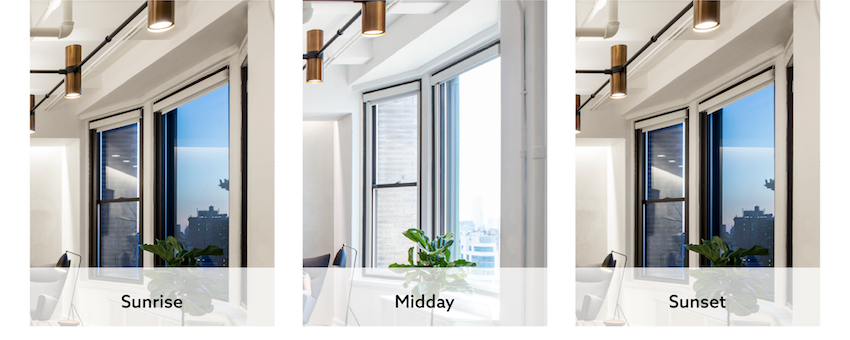
Image courtesy of Ketra/Magda Biernat
Project: Startup Office
Location: New York City
Architect: A+I
Lighting Design: Lighting Workshop
A healthy lighting solution evolves over the course of a day. The lighting and controls system at this New York office mimics the variations in natural sunlight—bright during the day to energize employees and dim at night to support healthy sleep cycles.
Of course, beyond control systems, the lighting fixtures and lamps are key parts of the system too. Fortunately, there is a wide range of high-quality light fixtures that can be used with a dynamic lighting system to produce white light as well as a full color spectrum. The lighting industry relies on the use of a correlated color temperature (CCT) rating to identify light color. The CCT is a specification of the color appearance of the light emitted by a lamp, related to a reference source when heated to a particular temperature, measured in degrees Kelvin (K). The lower the CCT rating, the warmer the color, (more yellows and amber) while the higher the rating, the cooler the color (more whites and blues). Dynamic lighting systems can take advantage of the full range of high-quality lighting products on the market that range from a very warm 1,400 K to a very cool 10,000 K. For reliability purposes, it is important to find lamps that maintain the desired color points over time. Further, narrow beam angles can be employed in fixtures to focus light in different spaces or enable ambient and art accent lighting from any ceiling height.
Part of the sophistication of advanced dynamic lighting systems is the ability to be fully customizable with a complete system of lighting and controls available. Users can easily adjust light levels and colors at any time, not limiting themselves to the times on the fixture schedule. There are also lighting products available that offer multiple warm dimming curves for a single product, enabling deeper control in any environment. Further, all lamps can be individually addressable through wireless control, regardless of how they are physically wired. The wireless solution simplifies installation while a wired ethernet connection provides reliable scalability.
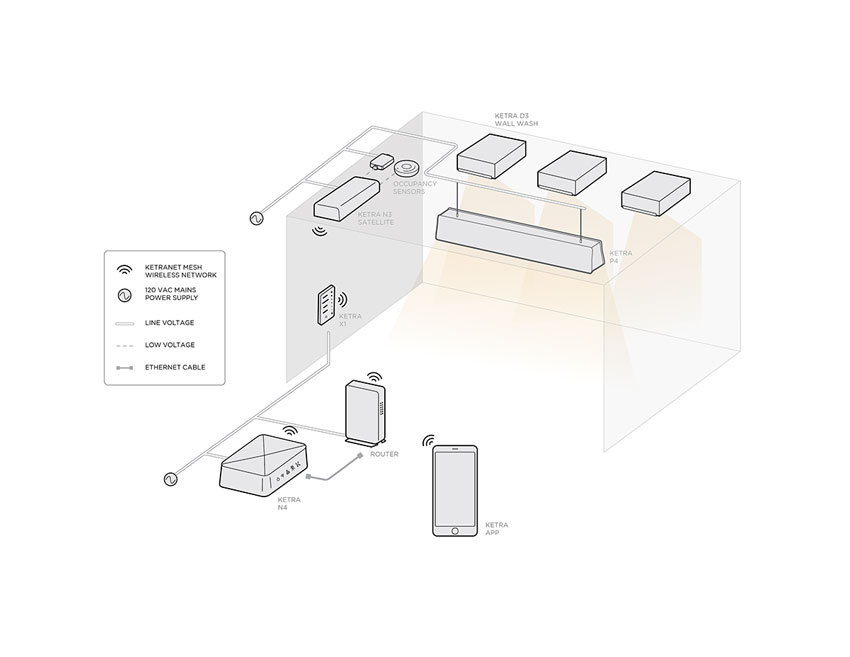
Image courtesy of Ketra
A complete dynamic lighting system includes wired and wireless controllers connected to a range of carefully selected luminaires and lamps.
A complete, advanced, dynamic lighting system includes onboard intelligence and a full system of sensors connected to lighting fixtures or lamps. An application programming interface (API) allows easy integration with different lighting systems, regardless of manufacturer.





